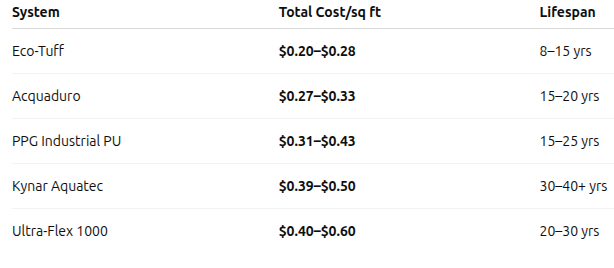3D Printed Glazing: Difference between revisions
Jump to navigation
Jump to search
No edit summary |
No edit summary |
||
| Line 5: | Line 5: | ||
[[File:3DPglazing.png]] [https://chatgpt.com/c/6843640f-d104-8010-86e4-ea398e531595] | [[File:3DPglazing.png]] [https://chatgpt.com/c/6843640f-d104-8010-86e4-ea398e531595] | ||
*But, digging in, price goes up when the coverage is considered - the above links are bogus because the coverage is not correct. [https://chatgpt.com/c/6843640f-d104-8010-86e4-ea398e531595]. Looks like back to glass, which is free. | |||
Latest revision as of 22:36, 6 June 2025
- For 3D printed glazing to be useful, it must be UV resistant. PMMA is an option. But not easy to print.
- Polycarbonate is the best - [1]. Apply 2k Polyurethane for 15-25 year life. [2]
- But it costs $1/sf to coat 3D printed polycarbonate! Might as well cast glass panes. [3]. But that is for low quantitis, with bulk sourcing at 5 gal+ cost goes down up to 50%, [4].
- Look at this including primer cost:
- But, digging in, price goes up when the coverage is considered - the above links are bogus because the coverage is not correct. [6]. Looks like back to glass, which is free.
